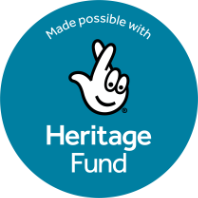Mapping the Broads
Mapping the Broads set out to explore the idea of a ‘map’ not just being a visual representation of an area of land, like the commonly known OS maps, but can be a range of alternative visual narratives. This idea was explored using research conducted by the Illustration Team at Norwich University of the Arts (NUA). This research resulted in material produced both collaboratively and individually to integrate image and narrative with the aim of telling a story about the Broads landscape. The University wanted it’s academics and students to work with the local community, schools, and experts to engage new audiences to explore with artistic practices.
Three tutors from NUA were engaged in this project, each of whom adopted different approaches to their research. One, Neil Bousfield, undertook a series of walks and created illustrations of those walks incorporating archival material and other sources. A large number of initial sketches were subsequently reduced to 70 which form a journey through the landscape and his work was shortlisted for the RBSA37 Print Prize in 2018.
Glyn Brewerton developed drawings based on sightings recorded in the Wheatfen Broad visitors’ book. Peter Nencini produced works derived from revetment blocks and matting documented on walks alongside Breydon Water, as it enters Great Yarmouth.

These individuals’ works formed the basis of subsequent activities with other groups. Community Workshops took place with refugees from English Plus and Herring House, a charitable housing association working with single homeless people in Great Yarmouth. Each participant was provided with a pack to keep, which comprised printed resources, an A3 sketchbook, drawing materials and a plastic portfolio in which to keep everything.
A relationship was established with Acle Academy which involved Year 8 students undertaking visits to Polkey’s Mill to learn about the cyclical processes of pumping water from the dykes and channels. They also had the opportunity to explore Reedham Marsh which helped them to engage with the natural world. They were able to use aerial and underwater drones and equipment such as peat corers to further their understanding. The school students were encouraged to mirror the approach used by Glyn Brewerton and make observations based on a range of sources, then catalogue their research in sketchbooks.

During subsequent workshops these were used as the basis to produce black and white prints. A follow up workshop at NUA, involving NUA students, helped to develop image making through collage and layering of line work into colour layers. These works were collated into a book, ‘Yare, Polkey’s and Halvergate, an illustrated visit’, which captured interpretations of the landscape by Acle Academy students. This featured in an exhibition, Mapping the Broads, in the University’s East Gallery from January to March 2020 and attracted 1346 visitors. The exhibition featured a film, Reconnecting with Nature, which documented the stages of the work with the Acle Academy students from start to finish, and also a public lunchtime talk on the same topic, which attracted 20 audience members.
The involvement of NUA students, which has happened in various forms over the duration of WMM, provides an opportunity for them to work with a brief set by an outside organisation, not purely from within academia, and is highly valued.
“It’s been brilliant, the students loved seeing their work in print and in the exhibition. They made me feel I could help plan the programme; it was quite organic, lovely.”
Jenny Branson Head of Art, Acle Academy
“The 6-week workshop period with Acle Academy felt good. I felt different about myself and my own practice as a result. The work with Acle Academy staff and the students, collaborators, being outdoors, the book and the exhibition – they were all good and worthwhile”.
Glyn Brewerton, NUA lecturer, Illustration.

NUA planned a symposium, ‘New Perspectives on the Rural: Landscape, Community and Creativity’. It had been intended that this take place at RSA House in London but because of uncertainties about Covid, it was finally held online during which 6 papers were delivered to around 200 participants, including many from outside the Broads area and a number from overseas. A subsequent production by Glyn Brewerton was a publication titled ‘Mapping the Broads’. Overall, this collaborative project formed a very successful component of NUA’s submission to the Research Excellence Framework 2021 which enabled the University to access £800k to make a giant 10m x 4m immersive screen. Their aim is to use it to do virtual reality showings of the effect of rising water levels on the Broads. They may also use it to provide a wellbeing space so that people can immerse themselves in nature without leaving the city. Read more about involvement in this innovative project here.
“Projects like this can’t just happen as one-offs because they lose momentum. My experience with the Water Mills and Marshes project showed me that there are moments when you can see people change, and become invested in a project, but the momentum to develop its legacy gets lost if funding stops or is changed”.
Glyn Brewerton, NUA lecturer, Illustration.
“Our students need live industry experience. Andrew comes and presents a project brief for them to work on and I look forward to it every year. The projects are not as tightly defined as projects in the first year or the course, they are very open, inclusive, and provide a lot of scope for the students”.
Rob Nicol, NUA lecturer, Illustration.
Read the full EDP article about the exhibition here

